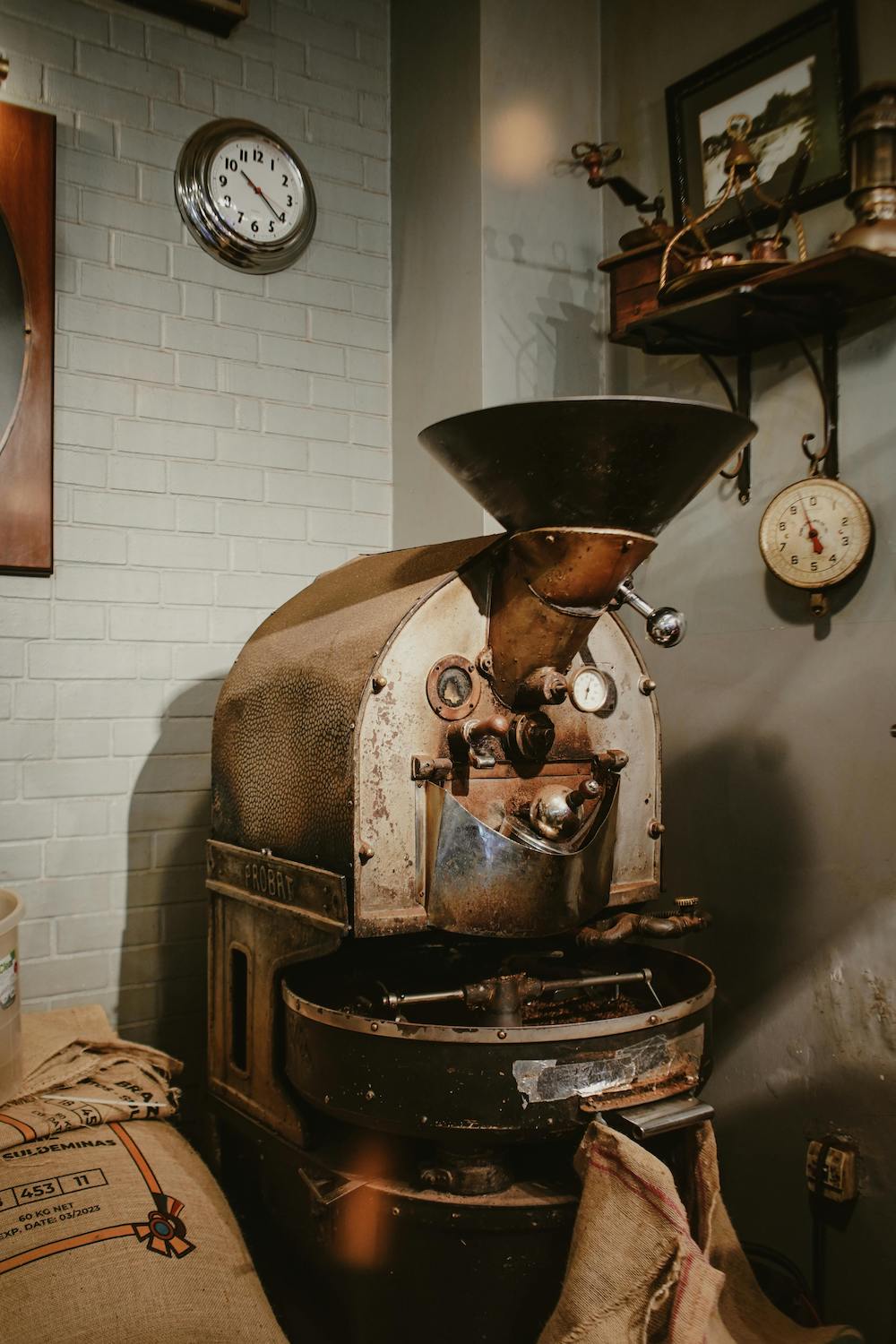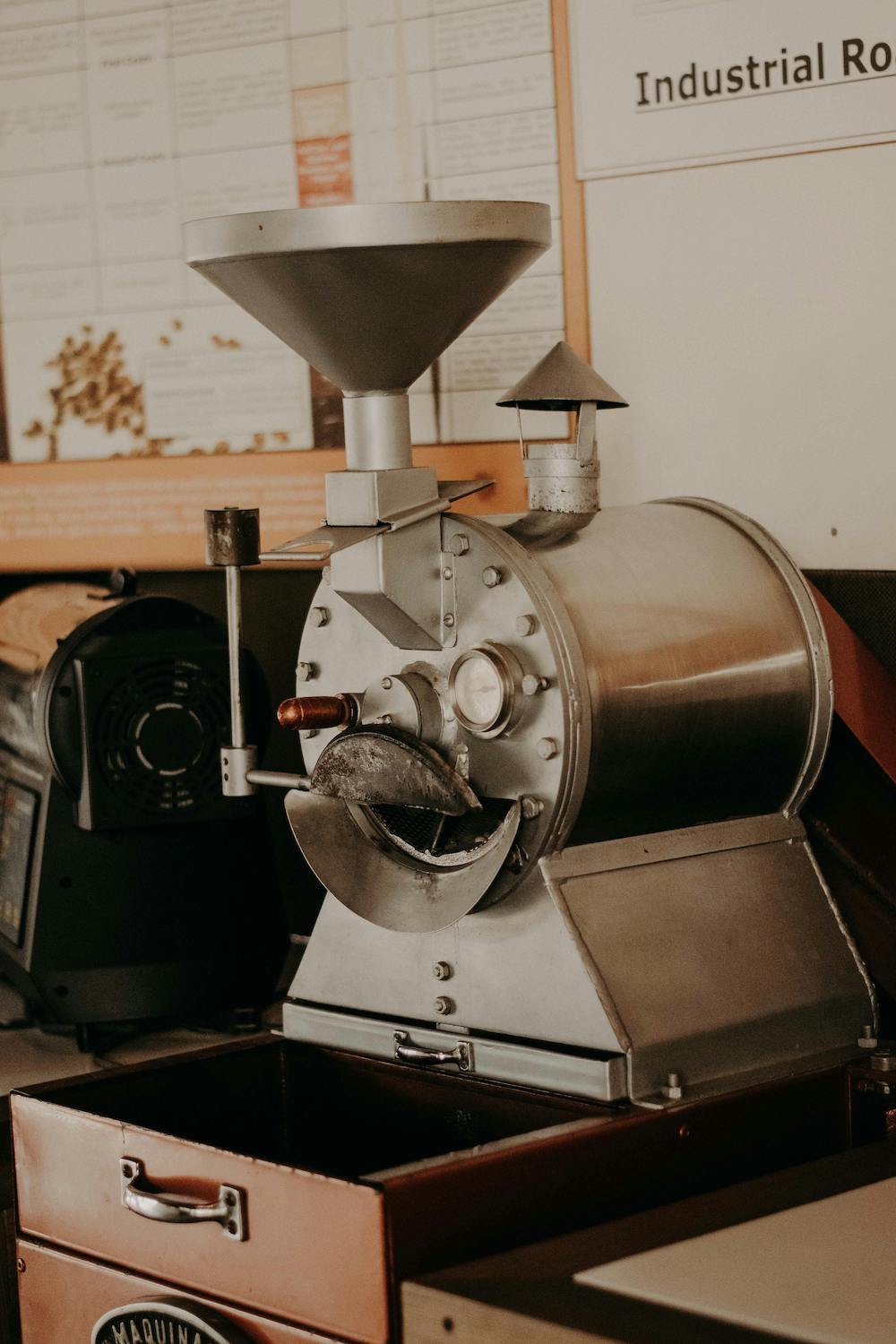
Vintage coffee roaster fans know: these old machines are more than relics. They’re powerhouses of flavor, sustainability, and story. In a fast-moving world hooked on upgrades, restored roasting equipment is quietly making a comeback—and not just for nostalgia’s sake.
Choosing a vintage coffee roaster means embracing quality that lasts, reducing environmental impact, and investing in machinery built to be repaired, not replaced. Whether you’re a café owner, small-batch roaster, or eco-conscious entrepreneur, these upcycled tools are rewriting what it means to roast responsibly.

Photo by Cihan Yüce from Pexels
Built to Last: Why Vintage Coffee Roasters Still Outperform
Ask any seasoned roaster about their favorite machine, and odds are good it’s not the newest model on the market. Older, commercial roasters were engineered with longevity in mind: precision welding, cast-iron drums, and mechanical parts that can be fixed with a wrench—not a software update.
These machines were made during an era when manufacturers built for the long haul. It’s not uncommon to find 1960s or 70s models still roasting daily. Some roasters even argue that these legacy machines produce a richer flavor due to their seasoned drums and superior heat retention.
Upcycled Vintage Coffee Roasters: A Win for the Planet
Here’s where the upcycling angle shines. Choosing a vintage coffee roaster over a new one reduces manufacturing demand and keeps heavy-duty machinery out of landfills. Each restored machine is a win for the circular economy—prolonging product life while preserving the resources embedded in its original production.
Brands like Coffee Equipment Pros are helping roasters give new life to old gear, offering refurbished models complete with upgraded safety components and deep cleaning, without stripping away the roaster’s soul.
Repair, Don’t Replace: The Durable Design Advantage
Today’s coffee equipment often comes with planned obsolescence. Breakdowns require specialized techs, expensive parts, and, eventually, full replacement. Not so with vintage coffee roasters.
These machines were designed to be repaired, not tossed. That makes them perfect for business owners who want gear that grows with them—without getting stuck in the upgrade cycle. It’s upcycling in action: rescuing useful, high-value equipment and turning it into a sustainable investment.
Aesthetic Appeal: Industrial Design With Storytelling Power
Vintage coffee roasters don’t just work well—they look incredible. Cast metal legs, exposed bolts, and visible drums bring a raw, industrial beauty to any space. For open-concept cafés and roasting studios, an upcycled coffee roaster becomes more than machinery. It’s a statement piece.
Customers don’t just sip your brew—they see where it was roasted. A beautifully restored 1975 Probat becomes part of your brand’s visual identity, tying craftsmanship and sustainability into every cup.
Customize and Modernize: Old Machines, New Tricks
Worried vintage means limited features? Don’t be. Legacy roasters are often modular and easy to modify. From digital temperature probes to afterburners and exhaust systems, it’s surprisingly easy to upgrade these classics for modern performance.
Even the most seasoned roasters find vintage coffee roasters easier to modify than newer models. With the right tech support, you can enhance an old roaster without compromising its vintage integrity. Think of it as tuning up a classic car—you keep the magic, and bring in the precision.
Budget Friendly, Brand Smart
New commercial roasters can cost tens of thousands of dollars. Buying vintage is budget-savvy. Not only do you save upfront, but many restored machines retain or even grow in value. That means more funds for beans, branding, or even that new mural you’ve been eyeing.
For startups or lean operations, an upcycled vintage coffee roaster lowers the barrier to entry without sacrificing quality. That’s financial sustainability working hand-in-hand with environmental goals.
Legacy in Every Roast: Stories Worth Sharing
There’s something emotionally satisfying about using equipment with a past. Every scuff, weld, or ding carries a story. Maybe your machine once fueled a jazz club or kept a family café buzzing for decades. Now it’s in your hands—roasting anew, continuing a legacy.
In a world of fast tech and short lifespans, giving a machine its second (or third) life is an act of love. It speaks to care—for the craft, the planet, and the community around your brew.
Where to Find a Vintage Coffee Roaster
Ready to join the revival? Skip the Craigslist guessing game. Seek out platforms like Coffee Equipment Pros that offer inspected, warrantied, and restored roasters. Many even include consultations based on your space and roasting goals.
These machines may be old-school, but buying one doesn’t have to be.

Photo by HAROLD PRODUCTIONS from Pexels
Final Sip: Why Vintage Coffee Roasters Make Sense
Choosing a vintage coffee roaster isn’t just a design choice—it’s a value statement. It signals commitment to sustainability, quality, and story. It reduces waste, saves money, and deepens the bond between your business and your customers.
Upcycled gear brings flavor, function, and a whole lot of soul. And when your tools reflect your values, every roast becomes part of something bigger.
